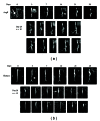Molecular imaging of experimental abdominal aortic aneurysms
- PMID: 23737735
- PMCID: PMC3655677
- DOI: 10.1155/2013/973150
Molecular imaging of experimental abdominal aortic aneurysms
Abstract
Current laboratory research in the field of abdominal aortic aneurysm (AAA) disease often utilizes small animal experimental models induced by genetic manipulation or chemical application. This has led to the use and development of multiple high-resolution molecular imaging modalities capable of tracking disease progression, quantifying the role of inflammation, and evaluating the effects of potential therapeutics. In vivo imaging reduces the number of research animals used, provides molecular and cellular information, and allows for longitudinal studies, a necessity when tracking vessel expansion in a single animal. This review outlines developments of both established and emerging molecular imaging techniques used to study AAA disease. Beyond the typical modalities used for anatomical imaging, which include ultrasound (US) and computed tomography (CT), previous molecular imaging efforts have used magnetic resonance (MR), near-infrared fluorescence (NIRF), bioluminescence, single-photon emission computed tomography (SPECT), and positron emission tomography (PET). Mouse and rat AAA models will hopefully provide insight into potential disease mechanisms, and the development of advanced molecular imaging techniques, if clinically useful, may have translational potential. These efforts could help improve the management of aneurysms and better evaluate the therapeutic potential of new treatments for human AAA disease.
Figures






References
-
- Belsley SJ, Tilson MD. Two decades of research on etiology and genetic factors in the abdominal aortic aneurysm (AAA)—with a glimpse into the 21st century. Acta Chirurgica Belgica. 2003;103(2):187–196. - PubMed
-
- Lederle FA, Johnson GR, Wilson SE, et al. Prevalence and associations of abdominal aortic aneurysm detected through screening. Annals of Internal Medicine. 1997;126(6):441–449. - PubMed
-
- von Allmen RS, Powell JT. The management of ruptured abdominal aortic aneurysms: screening for abdominal aortic aneurysm and incidence of rupture. The Journal of Cardiovascular Surgery. 2012;53(1):69–76. - PubMed
-
- Nanda S, Sharma SG, Longo S. Molecular targets and abdominal aortic aneurysms. Recent Patents on Cardiovascular Drug Discovery. 2009;4(2):150–159. - PubMed
Publication types
MeSH terms
Substances
LinkOut - more resources
Full Text Sources
Other Literature Sources

